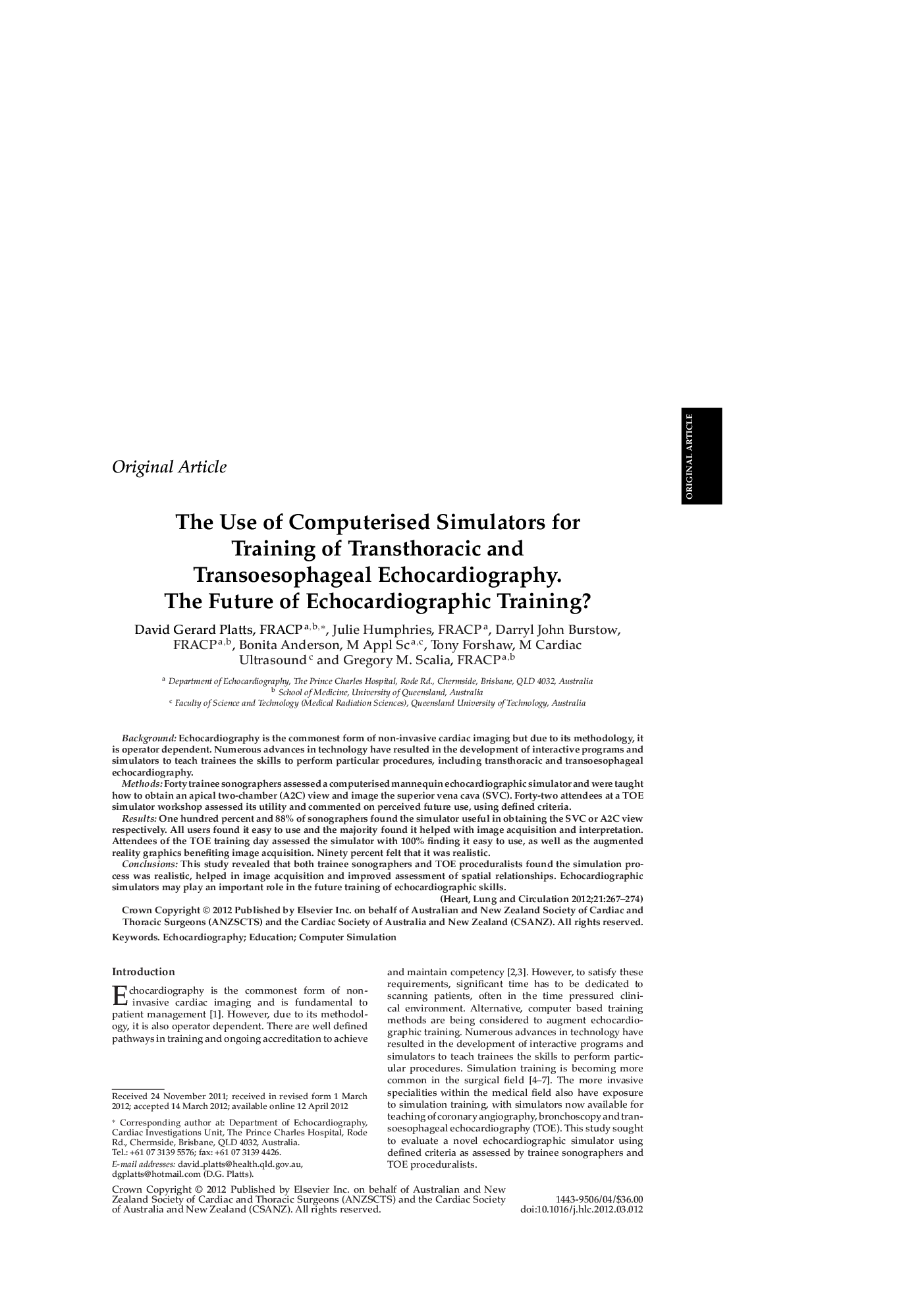| Article ID | Journal | Published Year | Pages | File Type |
|---|---|---|---|---|
| 2918514 | Heart, Lung and Circulation | 2012 | 8 Pages |
BackgroundEchocardiography is the commonest form of non-invasive cardiac imaging but due to its methodology, it is operator dependent. Numerous advances in technology have resulted in the development of interactive programs and simulators to teach trainees the skills to perform particular procedures, including transthoracic and transoesophageal echocardiography.MethodsForty trainee sonographers assessed a computerised mannequin echocardiographic simulator and were taught how to obtain an apical two-chamber (A2C) view and image the superior vena cava (SVC). Forty-two attendees at a TOE simulator workshop assessed its utility and commented on perceived future use, using defined criteria.ResultsOne hundred percent and 88% of sonographers found the simulator useful in obtaining the SVC or A2C view respectively. All users found it easy to use and the majority found it helped with image acquisition and interpretation. Attendees of the TOE training day assessed the simulator with 100% finding it easy to use, as well as the augmented reality graphics benefiting image acquisition. Ninety percent felt that it was realistic.ConclusionsThis study revealed that both trainee sonographers and TOE proceduralists found the simulation process was realistic, helped in image acquisition and improved assessment of spatial relationships. Echocardiographic simulators may play an important role in the future training of echocardiographic skills.
